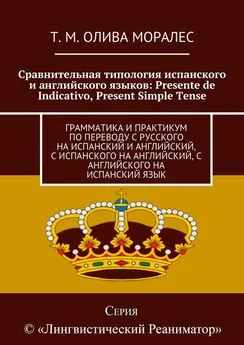В. И. Иванов - Английский язык в экономике, бухучете и банковско-финансовой деятельности
- Название:Английский язык в экономике, бухучете и банковско-финансовой деятельности
- Автор:
- Жанр:
- Издательство:неизвестно
- Год:неизвестен
- ISBN:9785449396549
- Рейтинг:
- Избранное:Добавить в избранное
-
Отзывы:
-
Ваша оценка:
В. И. Иванов - Английский язык в экономике, бухучете и банковско-финансовой деятельности краткое содержание
Английский язык в экономике, бухучете и банковско-финансовой деятельности - читать онлайн бесплатно ознакомительный отрывок
Интервал:
Закладка:
Most economists thought the fluctuating dollar would in time eliminate the trade deficit (as the American dollar fell, U.S. exports would become cheaper and thus more competitive; more costly imports would be reduced). The trade deficits, however, continued, and the dollar fluctuated wildly. Finally in the 1980s many economists recognized that floating exchange rates were not the answer, but attempts at currency stabilization proved difficult. Foreign markets for American agricultural products had been lost in periods of the strong dollar and were hard to recapture. As U.S. imports of manufactured goods increased, numerous discussions focused on America’s competitive position. Demands mounted for protectionism – to save jobs. The 1988 Omnibus Trade and Competitiveness Act allowed the president to impose sanctions on individual nations that engaged in unfair trade practices.
In the 1970s and 1980s, Americans groped for ways to become more competitive in the world economy and, in turn, to deal with the persistent excess of goods imports over exports. The continuing trade imbalance, particularly with Japan, spurred controversy. Was it the fault of Americans: low productivity increases, absence of goods desired abroad, lack of attention to exports? Was it that the dollar had not declined sufficiently to make U.S. goods attractive to foreign buyers? Or, was it that America’s trading partners acted in ways that were prejudicial to U.S. exports? Perhaps it was all of these. Clearly, however, American producers and consumers chose to buy imports, often preferring goods made abroad to those manufactured at home. The rise of imports relative to exports was critical to the trade deficit.
Mira Wilkins
EXERCISES
Exercise 1. Say if each of the following statements is true or not.
1. In the 19 thcentury America was a net exporter of merchandise.
2. In the early 20 thcentury America imported grain and mineral products.
3. U.S. exports increased after WWI and WWII.
Exercise 2.Answer the questions.
1. How did high tariffs and duties influence American economy in the late 19 thcentury?
2. When did the U.S. exports reach the highest level?
3. How can you describe world economy in 1920s through 1930s?
4. How did WWII influence international trade?
5. In what way did the U.S. promote international trade?
6. How did the fall of trade barriers influence the U.S. economy?
Exercise 3
1. How do you understand the term «net importer»?
2. Are high tariffs and duties beneficial to a country’s economy?
3. Under what circumstances would you recommend to introduce trade barriers in your countries?
Exercise 4.Translate into English.
1. Главной статьей экспорта этой страны является хлопок-сырец. 2. Для защиты внутреннего рынка были введены высокие тарифы и таможенные пошлины. 3. Наиболее характерным для роста американского экспорта был рост экспорта промышленных товаров. 4. Экспорт всегда превышал импорт, и внешнеторговый баланс всегда оставался положительным. 5. Большинство экономистов полагало, что плавающий курс доллара со временем ликвидирует внешнеторговый дефицит. 6. Для экономики страны были характерны низкие темпы роста производительности, отсутствие товаров, пользующихся спросом за границей, и недостаточное внимание к экспорту.
Text 2. Government and the economy
In the relationship between government and the economy, ideas influence policies and policies shape outcomes. This three-way connection is sometimes direct, sometimes tenuous, sometimes perverse. Of the three elements, the easiest to evaluate historically is outcomes. By almost any measure, the American economy is the most successful the world has ever known. Even in colonial times the standard of living was generally better in America, at least for whites, than in Europe or Asia. In the decades following the American Revolution, economic growth remained high and remarkably steady. By the end of the nineteenth century, the United States surpassed all other countries in both agricultural and industrial output.
For most of the twentieth century, gross national product per capita has remained higher in the United States than in any other country, with the occasional exception of small advanced economies such as Switzerland and Denmark or oil-rich nations such as Kuwait. Only in the 1980s was the United States overtaken by countries such as West Germany and Japan, and even then only by the measurement of gnp per capita at exchange rates favorable to the deutsche mark and yen. By any other index of quality of life, the American standard of living was still the highest in the world.
If this outcome of unique affluence is clear, the ideas and policies behind it remain open to interpretation. How much did American economic success derive from laissez-faire ideas and policies, how much from governmental intervention? How much did it stem from neither of these but from the simple fact of a wealthy, isolated, and sparsely inhabited continent ready for exploitation? Assuming, for the sake of argument, that the early policies can be characterized as laissez-faire, then how much of the letting alone originated in the reasoning of Adam Smith and Thomas Jefferson, how much in the practical impossibility of effective public administration over a far-flung country?
In tracing the ideas behind American economic policies, the colonial period is the proper starting place. As the historian Carl Degler once remarked, «Capitalism came in the first ships.» The English settlers of North America brought with them clear convictions about the nature of sovereignty and the rights of property. These ideas, and the resulting policies, then interacted with the circumstances of a rich and underpopulated continent to set the context of economic activity.
During most of the colonial period, the hand of government lay lightly on the economy. This was true even allowing for such exceptions as the harshness of Puritan rule in early New England, the heavy taxation of Chesapeake tobacco by the English Crown, and the odious institution of slavery. When the colonists did revolt in 1775, it was in large measure against Britain’s new revenue policies of the 1760s and 1770s, which conveyed to American shores a fresh corps of administrative officials. This new regime brought taxation without representation, together with other violations of the «rights of Englishmen.»
The intellectual contours of the American Revolution suggest that the United States was born in a broad outburst of anti-authoritarianism that transcended any temporary disaffection from George III, the British monarch. This anti-authoritarianism is plainly reflected in the texts of contemporary documents: the scores of revolutionary pamphlets calling upon Americans to throw off the British yoke, the Declaration of Independence, the Constitution, the Federalist Papers, and the Bill of Rights. All of these late-eighteenth-century documents express the deep-seated aversion to absolute authority, the hostility to centralized power in which the Union was born. Even though the Constitution seemed to many revolutionaries to imply an unduly centralized government, it still vested ultimate sovereignty in «the people» and divided governmental power among three branches, each possessing the power to check the other two. In still another balancing act, the federal government as a whole both checked and was checked by state governments. As Charles Evans Hughes once remarked, the Founding Fathers had designed «the most successful contrivance the world has ever known for preventing things from being done.»
Given these institutional limitations on authority, can it be said that the government of the United States historically followed a policy of laissez-faire? Perhaps, but only as measured against Soviet-style command economies or the statist developmental policies of Napoleonic France, Bismarckian Germany, or Meiji Japan. Compared with liberal regimes such as that of Victorian Britain, the American government violated laissez-faire as often as it practiced it.
Broadly speaking, both federal and state governments were active in the economic sphere during the first half of the nineteenth century, passive in the second half, and then active again throughout the twentieth century. In the first half of the nineteenth century, state governments chartered numerous banks and expended public funds liberally for internal improvements such as canals, turnpikes, and railways. Meanwhile, the federal government promoted agricultural exports, protected domestic industry through tariffs, subsidized commerce through a generous postal rate structure, and encouraged the building of railways. Equally important, and often overlooked in analyses of government-business relations, the national government pursued an energetic and relentless policy of land acquisition and development. During the nineteenth century, more individual Americans made their fortunes from the exploitation of newly annexed lands than from any other source. «Manifest destiny» was an operative economic policy as well as a slogan of nationalism and empire, as the geographical extent of the United States was multiplied severalfold by the addition of the Old Northwest, the Louisiana Purchase, the Florida Cession, the Mexican Cession, the Gadsden Purchase, the Oregon Territory, and the acquisition of Texas, Alaska, and Hawaii.
In less visible ways, the legal order of the United States was shaped so as to lubricate the operations of private enterprise. Decade by decade, the states relaxed requirements for the privilege of incorporation, far in advance of parallel developments in Europe. In bankruptcy law, incentives were fashioned so as to favor debtors more than creditors, a reversal of common European practice. Similarly, contract law became highly refined in America, facilitating commerce among the disparate populations of strangers who came to American shores and pushed ever westward. Meanwhile, taxation remained light, a circumstance made possible by ample revenues from the sale of public lands and from customs duties on goods imported from Europe. All of this added up to a situation uncommonly hospitable to what the legal historian Willard Hurst has called «the release of energy.» Policymakers had systematically designed a fertile setting for private entrepreneurship – a greenhouse for business. So long as individual companies stayed small, no real conflict between the welfare of the American people and that of its business units became serious. Unfortunately, that happy situation endured only until the 1880s.
Big business (trusts) appeared in the United States during that decade, a good deal earlier than in most other countries. Once established, it grew faster and to a larger size than it did elsewhere. One reason was the absence of any countervailing force in America. A new country made up entirely of immigrants (except for the Native Americans), the United States had no established church, no standing army, no hereditary aristocracy, no mandarin class, no feudal tradition. Because of the nation’s individualistic ideology, almost no government ownership of business enterprise existed, in contrast to substantial public undertakings even in other market economies, let alone socialist ones. The exceptions to this rule became famous largely because they were exceptions: the Erie Canal in the nineteenth century, the Panama Canal Company and the Tennessee Valley Authority in the twentieth. Throughout American history, including the present time, the total tax bite of all governmental units has typically been less than in comparable industrial countries such as Britain, France, and Germany. Until the twentieth century, the absolute size of the national government remained minuscule, and even today it is relatively smaller than those of other countries. In 1871, at the dawn of the age of big business, the federal government employed only fifty-one thousand civilians, of whom thirty-seven thousand were postal workers. The remaining fourteen thousand constituted the entire national government of a country with a population of 41 million. This amounted to one federal worker per twenty-nine hundred inhabitants in contrast to about one per hundred in the late twentieth century.
Читать дальшеИнтервал:
Закладка:










